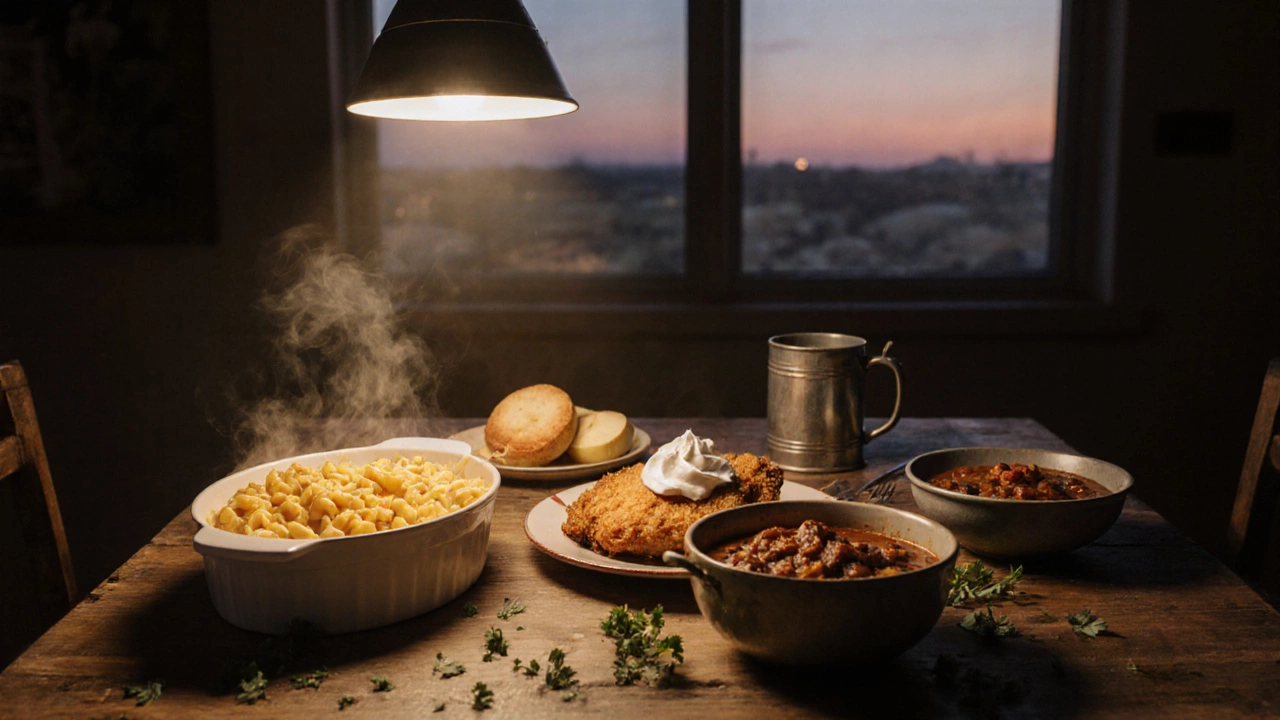Traditional American Food: Classic Flavors & Everyday Staples
When talking about Traditional American Food, the dishes and cooking habits that have shaped the United States’ kitchens for generations. Also known as classic US cuisine, it brings together regional ingredients, comfort‑style cooking, and a love for simple, hearty meals.
At the heart of this culinary story sits the hamburger, a grilled beef patty tucked in a soft bun, often topped with cheese, lettuce, and pickles. The hamburger isn’t just fast‑food hype; it reflects the country’s tradition of turning affordable proteins into satisfying meals. Pair it with a side of comfort food, recipes that soothe the palate and evoke home memories—think creamy mac and cheese or a steaming bowl of chicken soup—and you’ve captured the essence of everyday American dining.
Key Themes in Traditional American Cooking
First, seasonal and regional produce decides what lands on the plate. In New England, you’ll find lobster rolls and apple cobbler, while the South leans on okra, collard greens, and sweet potato pie. Second, techniques are straightforward: grilling, frying, and slow‑cooking dominate because they deliver flavor without fuss. Third, the meals often aim for comfort—rich sauces, buttery biscuits, and indulgent desserts like the ice‑cream‑laden sundaes that currently top global dessert sales.
These themes link directly to the posts you’ll see below. For example, the article on the “Most Sold Dessert” explains why ice cream, a staple comfort treat, dominates worldwide. Meanwhile, the deep dive into “America’s #1 Dish” breaks down the hamburger’s rise from backyard grill to cultural icon. Both pieces illustrate how simple, approachable foods become national symbols.
Another important piece of the puzzle is the balance between tradition and innovation. Artisan chefs at The Culinary Crafts Academy often remix classic dishes with seasonal twists—adding a drizzle of locally sourced maple syrup to a traditional pork chop or swapping regular potatoes for sweet potatoes in a home‑fries recipe. This blend keeps the cuisine fresh while honoring its roots, a concept echoed in the post about “How Mayonnaise Keeps Chicken Juicy,” which shows how a humble kitchen staple can transform texture.
Let’s not forget the role of comfort in tough times. The “Simple Comfort Food Ideas for When Nothing Tastes Good” article highlights how familiar flavors can lift mood, and the “Why Families Don’t Eat Dinner Together Anymore” piece explores how busy schedules affect the sharing of these meals. Both discussions reinforce that traditional American food isn’t just about taste; it’s about community and wellbeing.
Finally, practicality drives many of these recipes. Whether you’re budgeting with the “How to Save on a Grocery Bill” guide or looking for quick pantry hacks in the “No Food Lunch Ideas” post, the underlying principle is the same: make delicious, wholesome food accessible to everyone. That ethos is what makes dishes like the hamburger, mac and cheese, and pumpkin pie endure across generations.
Now that you’ve got a solid sense of what traditional American food really means—its history, its staples, its comforting power—take a look at the curated articles below. You’ll find practical tips, tasty variations, and fresh perspectives that will help you bring these classic flavors into your own kitchen.

America’s Comfort Food: Classic Dishes That Warm Your Soul
Discover the iconic dishes that define America’s comfort food, from macandcheese to apple pie, with history, cooking tips, and a handy comparison guide.
More Detail